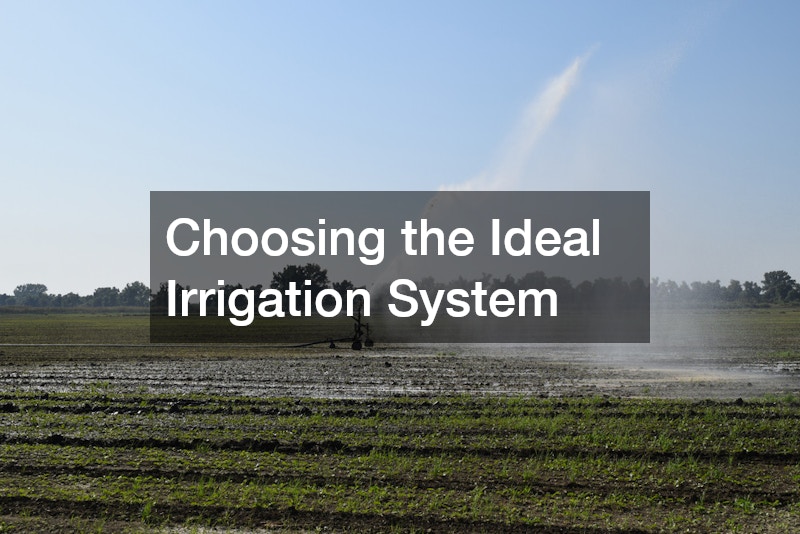In agriculture and landscaping, selecting the appropriate irrigation system is pivotal for optimizing water use and ensuring healthy plant growth. The right system can significantly influence productivity, conserve vital resources, and promote sustainable practices. As global water resources face increasing pressure, understanding the diverse irrigation methods available and their specific applications becomes essential for any agriculturalist or landscaper striving for efficiency and sustainability.
What are the different types of irrigation systems?
Surface Irrigation
Surface irrigation is one of the oldest and most widely used forms of watering crops. It relies on gravity to spread water over the surface of the land, directly moistening the soil. While this method can be cost-effective due to its minimal technological requirements, it often necessitates leveled fields and fine-tuning to avoid water wastage and ensure uniform distribution.
Drip Irrigation
Drip irrigation, also known as trickle irrigation, is a highly efficient system that delivers water directly to the plant’s root zone through a network of valves, pipes, tubing, and emitters. This targeted approach minimizes water waste and evaporation, making it ideal for arid regions and water-scarce situations. However, the initial setup cost can be high, and regular maintenance is crucial to prevent clogging and ensure optimal performance.
Sprinkler Irrigation
Sprinkler systems simulate natural rainfall by using perforated pipes or sprinklers to evenly distribute water across a field. They are versatile and can be used on various types of terrain and crops, making them popular for both agricultural and residential purposes. Despite their benefits, sprinklers can have a higher water waste rate due to wind drift and evaporation, especially during hot, sunny days.
How do I determine the water needs of my crops or plants?
Understanding Plant Water Requirements
Every plant species has its own unique water requirement, influenced by its growth stage and intrinsic properties. Excessive watering can lead to root diseases, while inadequate water supply can stunt growth and yield. Therefore, understanding these requirements helps in tailoring irrigation schedules that optimize plant health and maximize crop outputs.
Climate and Environmental Considerations
The climatic conditions of a region, including temperature, humidity, and rainfall patterns, significantly impact irrigation needs. In drier climates with limited rainfall, more water-intensive irrigation systems may be necessary to compensate for natural deficits. An awareness of seasonal variations and long-term weather trends is invaluable for making informed decisions on irrigation practices.
What are the cost considerations for different irrigation systems?
Initial Setup Costs
The upfront cost of implementing an irrigation system can vary greatly depending on the type and scale of the system chosen. Simple surface irrigation might require minimal investment, while sophisticated drip or sprinkler systems could demand significant expenditures in infrastructure and technology. Balancing these initial costs with long-term benefits is essential for making sound financial decisions.
Maintenance and Operational Expenses
Maintenance costs for irrigation systems can include repairs, replacements, and annual servicing, which are essential for ensuring efficiency and longevity. Automated systems might incur higher electricity and water expenses, while manual systems may demand more labor and time. Understanding these ongoing costs helps in budgeting and planning for sustainable operational practices.
How can I improve the efficiency of my irrigation system?
Implementing Water-Saving Technologies
Incorporating water-saving innovations like soil moisture sensors and automated timers can significantly enhance irrigation efficiency. These technologies allow for precise watering schedules, reducing wastage and conserving resources. Investing in such tools ensures that irrigation practices align with contemporary sustainability goals.
Regular Maintenance and Monitoring
Regular check-ups and upkeep of irrigation equipment help prevent leaks and failures that could lead to increased water consumption and system inefficiencies. Periodic monitoring allows for prompt identification and resolution of issues before they escalate. By maintaining rigorous oversight, users can ensure that systems run optimally and extend their functional lifespan.
Which irrigation system is best suited for sustainable agriculture?
Evaluating Environmental Impact
Sustainable irrigation prioritizes systems that reduce water waste and greenhouse gas emissions while conserving energy. Systems like drip irrigation often have the lowest environmental impact by directly targeting plant roots and minimizing evaporation and runoff. The choice of system should reflect an understanding of how it integrates with ecological preservation strategies.
Balancing Sustainability with Productivity
Achieving a balance between sustainability and productivity requires selecting systems that align environmental considerations with crop yield goals. Efficient irrigation practices conserve essential resources and reduce the ecological footprint, promoting long-term agricultural health and productivity. This balance underscores the importance of adopting technologies and practices that support both sustainability and economic viability.
Choosing the right irrigation system requires careful consideration of various factors such as crop needs, environmental conditions, and cost implications. Each option presents unique benefits and drawbacks that must be evaluated to ensure agricultural success and sustainability. By staying informed about advancements and open to adaptations, farmers and landscapers can make choices that not only meet current demands but also secure future resources.



